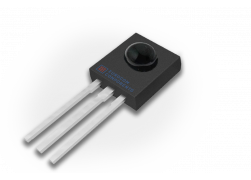Filter
Please note:

Minimum order amount: 500 UAH
Quantity of SMD: multiples 100 pcs
To buy photocells in Kiev and Ukraine
The basic structure of a solar cell consists of a U-shaped alkali metal and a collector.
The phototube, also known as the electric eye, photosensitive tube, is one of the applications of the photoelectric effect. The wavelength of a photon can be determined by using the photoelectrons generated by the metal under light irradiation and by measuring the maximum voltage of the photoelectrons. In order to increase the frequency of photons that can generate a photoelectric effect, an alkali metal (eg, cesium) with a lower free energy is usually chosen as the irradiated metal electrode.
The window material depends on the measured wavelength range.
- If the wavelength range is between visible light, ordinary glass can be used as the window material;
- The wavelength range includes ultraviolet light, and quartz is often used as window material;
- The wavelength range is in the infrared range, zinc selenide and silicon are often used as window materials.
In order to maintain the degree of vacuum in the solar cell, additional alkali metal is added as a degassing agent during production, and during use, some alkali metal electrodes are released due to light irradiation. So a little alkali metal is often attached to the photocell.
Therefore, before further measurements, voltage must be applied to the photocell in order to evaporate the alkali metal on the window. This process is also known as a heat engine before using a spectrophotometer.
